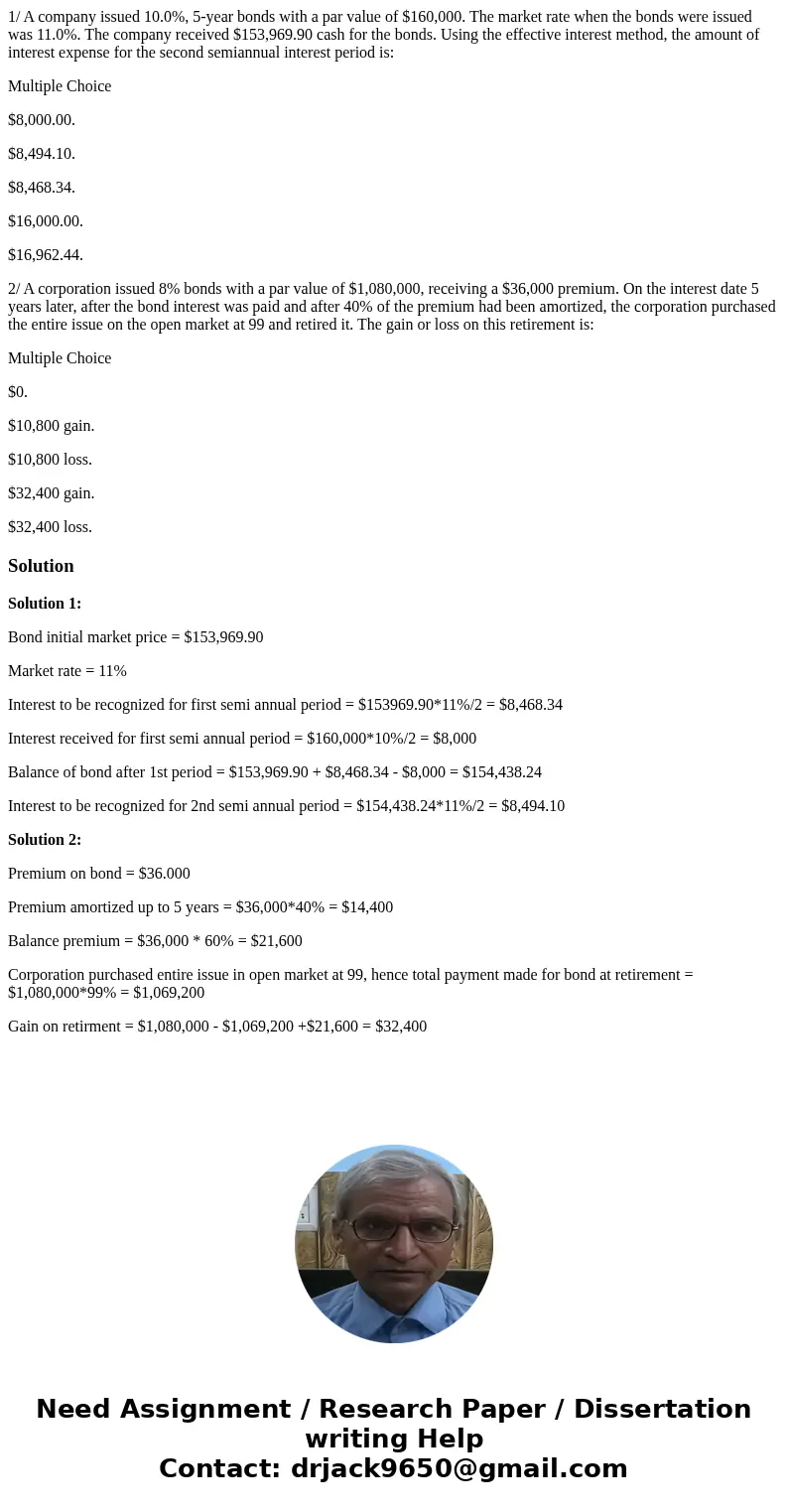1 A company issued 100 5year bonds with a par value of 16000
1/ A company issued 10.0%, 5-year bonds with a par value of $160,000. The market rate when the bonds were issued was 11.0%. The company received $153,969.90 cash for the bonds. Using the effective interest method, the amount of interest expense for the second semiannual interest period is:
Multiple Choice
$8,000.00.
$8,494.10.
$8,468.34.
$16,000.00.
$16,962.44.
2/ A corporation issued 8% bonds with a par value of $1,080,000, receiving a $36,000 premium. On the interest date 5 years later, after the bond interest was paid and after 40% of the premium had been amortized, the corporation purchased the entire issue on the open market at 99 and retired it. The gain or loss on this retirement is:
Multiple Choice
$0.
$10,800 gain.
$10,800 loss.
$32,400 gain.
$32,400 loss.
Solution
Solution 1:
Bond initial market price = $153,969.90
Market rate = 11%
Interest to be recognized for first semi annual period = $153969.90*11%/2 = $8,468.34
Interest received for first semi annual period = $160,000*10%/2 = $8,000
Balance of bond after 1st period = $153,969.90 + $8,468.34 - $8,000 = $154,438.24
Interest to be recognized for 2nd semi annual period = $154,438.24*11%/2 = $8,494.10
Solution 2:
Premium on bond = $36.000
Premium amortized up to 5 years = $36,000*40% = $14,400
Balance premium = $36,000 * 60% = $21,600
Corporation purchased entire issue in open market at 99, hence total payment made for bond at retirement = $1,080,000*99% = $1,069,200
Gain on retirment = $1,080,000 - $1,069,200 +$21,600 = $32,400

 Homework Sourse
Homework Sourse